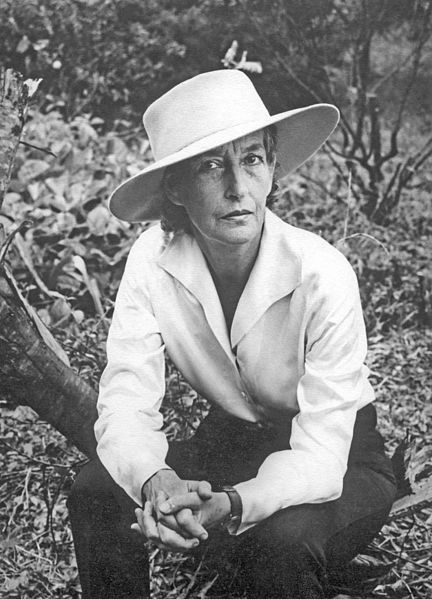-2-
In 1947 while Vera was in her mid-thirties, she moved to Australia. She settled in Queensland, buying a small property in which she grew vegetables and tobacco before moving on to sugar cane. She was an incredibly hard-working woman and was the second woman to be awarded a sugar assignment.
-3-
During her spare time, Vera sketched and painted local flora amassing a large collection. During the mid-1960s, Vera heard a radio interview that featured the Director of the Royal Botanic Gardens at Kew. The director mentioned that botany was poorly funded and that the Gardens relied on the assistance of volunteers, especially collectors. Vera wrote to him offering her assistance, enclosing some of her drawings. This was the beginning of a long and passionate association with the herbarium at Kew.
-4-
During this time, Vera made many self-funded journeys around Australia and the Pacific Islands collecting many plant specimens that she then sent off to Kew and some other herbaria in Australia, Europe, and North America. The Queensland Herbarium received more than 1700 plant specimens as a result of Vera's research and passion. Vera also published three books on the wild flowers of Australia. In 1995, Vera was awarded the Order of Australia Medal for her wonderful contributions to art and the environment. She died in May 1999 surrounded by friends and family.
-5-
Along with having her work exhibited in the Nature's Powerhouse building in the Cooktown Botanic Gardens; the Vera Scarth-Johnson Wildflower Reserve in named in her honour. There is also a rare shrub named after her, Argophyllum verae.Resources:
Hodge, G. (2013) RHS Botany for Gardeners, London, Octopus Publishing Group
Vera Scarth-Johnson - Wikipedia, the free encyclopedia. 2014. Vera Scarth-Johnson - Wikipedia, the free encyclopedia. [ONLINE] Available at: http://en.wikipedia.org/wiki/Vera_Scarth-Johnson. [Accessed 28 February 2014].









